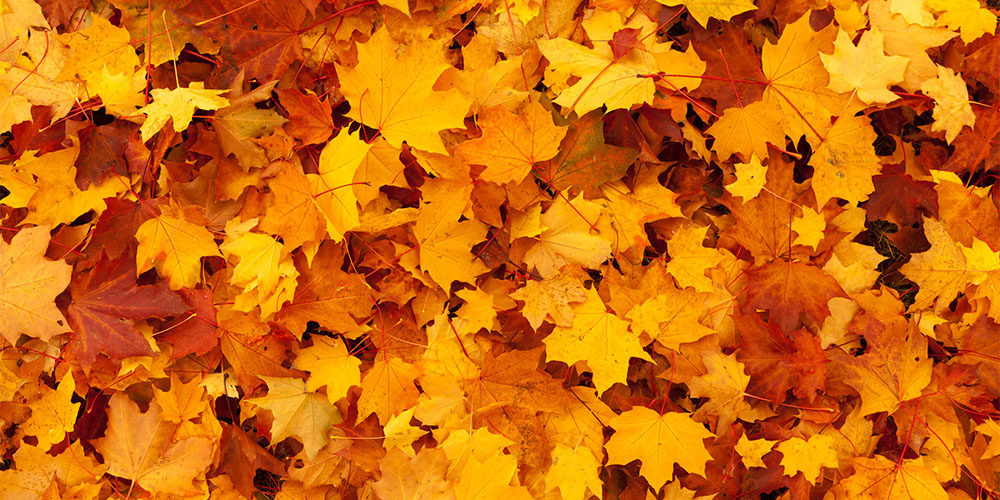As my dad and I followed a raccoon trail one fall afternoon many years ago, I bent down and picked up a seemingly luminescent maple leaf. When I showed it to him, he said when he was young his teacher had sent the class out to find “the prettiest leaf.”
I was somewhat stunned. Dad spoke so seldom of his early days. And this memory had stayed with him through war, work, marriage, five children . . .
I was also moved. Someone had validated his own developing sense of aesthetics at an early age. What a wonderful gift that teacher gave her students that day. Always in a hurry (an understatement), my dad nonetheless took time to appreciate sunsets, fresh snow on tree limbs, and sightings of deer—as well as autumn leaves.
Today, in a society focused on crisis, disaster, and all things digital, many of us have a diminished sense of relationship with nature, that which we are and on which we depend. Yet, curiosity about and respect for the natural world are foundational to our lives as well as to the endeavor we know as science.
We all have the potential to play a role in altering common perceptions of nature as separate, static, and somewhat irrelevant to our days. We might begin to increase awareness and to reestablish our connection with what we often refer to as the natural world by considering just how it is that people do get connected. Eyes and hearts appear to be opened to the connection through at least three routes: one’s self, other people, and other organisms. In every case, the threads that bind are born of relationship.
One’s Self
Self-awareness is perhaps the most-direct means for recognizing our connection with nature. For example, poet and writer Gary Snyder describes his change in awareness as follows:
There are many ways to be in nature . . . The most common way is . . . to become amateur naturalists . . . But we are still on the level of an assumed distinction between the see-er and the seen . . . But there’s a very interesting shift that takes place when you understand yourself, and feel yourself, as an animal . . . When it just hit me that I really was an animal and that all of the things that we call “human” are simply part of that, even our spirituality . . . So I’ve begun to feel more connected . . . So it’s no longer a matter of learning to be in nature, but understanding that you are nature . . .
Gary Snyder | The Way Normal People See Things
Other People
We all have many teachers, both formal and informal, as we travel life’s byways. Their influence is inestimable. My dad’s experience is one example. Another is that of teacher-writer Jesse Stuart’s father:
Once, on a rainy Sunday afternoon when we were walking between cornfields, he [Stuart’s father] motioned for me to step up beside him and look. He pointed to a redbird on its nest in a locust tree. Here sat a redbird with shiny red feathers upon the dark background of a nest. It was just another bird’s nest to me, until he whispered, “Ever see anything as pretty as that redbird sitting on that dark nest in the white drops of rain?” From this time on, I have liked to see birds, especially redbirds, sitting on their nests in the rain. My father was the first one ever to make me see the beauty in these little things around me.
Jesse Stuart | To Teach, To Love
Other Organisms
A third avenue mending the connection involves other organisms, life, and the recognition of kinship that derives either from our many similarities or from caring for and respecting them and their particular needs. Philosopher and writer Alice Koller provides insight:
My connection to Logos [Koller’s German shepherd] opened me out to the whole of the natural world and taught me the intimacy of my interconnections with earth, air, water, with wild creatures, initiating me into a world I had inhabited for nearly forty years without living in it. I still enlarge that education, still draw on it, cannot now conceive being without it. Its beginnings lay in the barely noticeable step of letting Logos outside as soon as I awakened each morning.
Alice Koller | The Stations of Solitude
As Gary Snyder suggests, “there are many ways to be in nature.” We may witness the opening of a rose or the antics of cats, take a quiet moment by a creek, listen to the call of a mourning dove, drink in the smell of rain in the distance—gentle reminders of the mystery: our being conscious of and living in an awe-inspiring universe. Every aspect of connection has the potential broaden our perspective as it fills us with humility, gratitude, and wonder.
Note: I found most of these words during a marathon purging of paper in my basement file cabinet. They were in an article that had been submitted to Science and Children. The pages were stamped: “Received May 18, 1992.” The attached letter, dated January 24, 1995, reads: “Because it received positive reviews, we held your manuscript in our ‘pending’ files and continued to consider it for publication . . . After we have held a manuscript for more than two years . . . we feel that we must do the author the courtesy of returning the material so that it can be submitted elsewhere . . . We hope to hear from you again.” Although long forgotten, that, by far, was the kindest rejection I have yet to receive.

